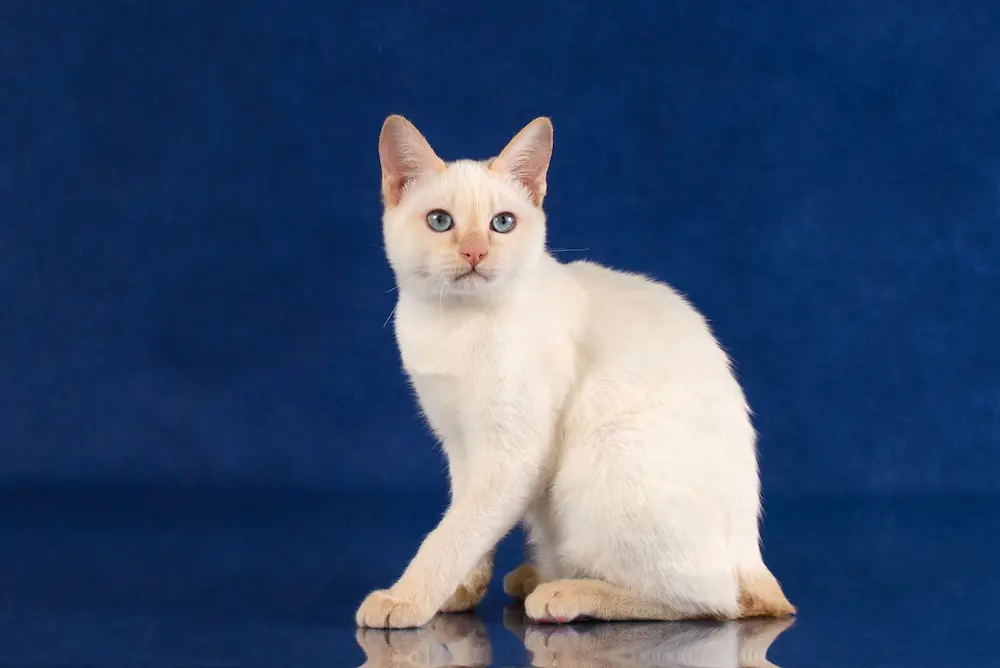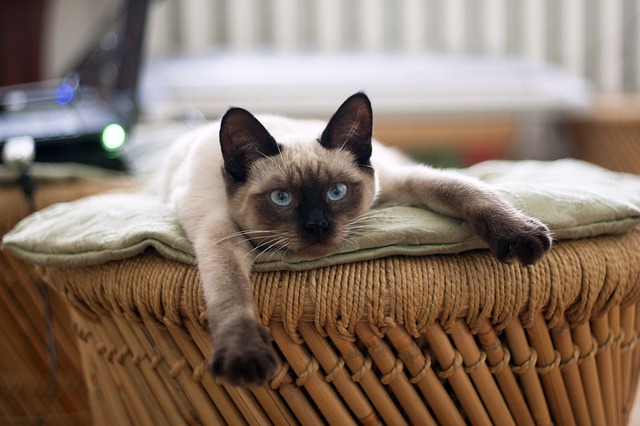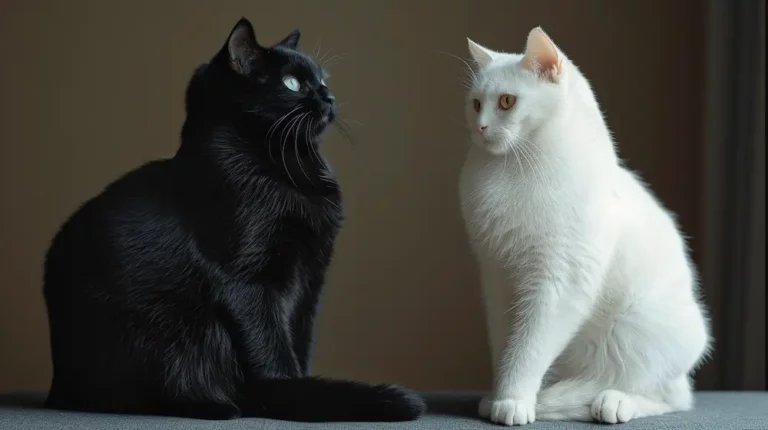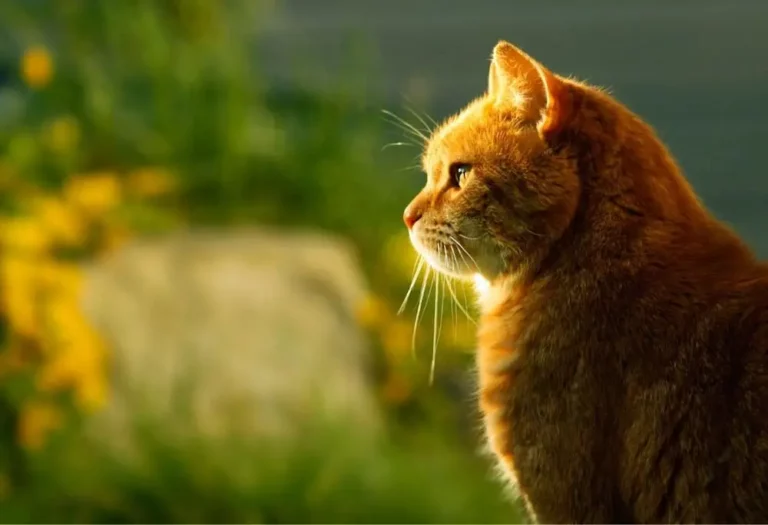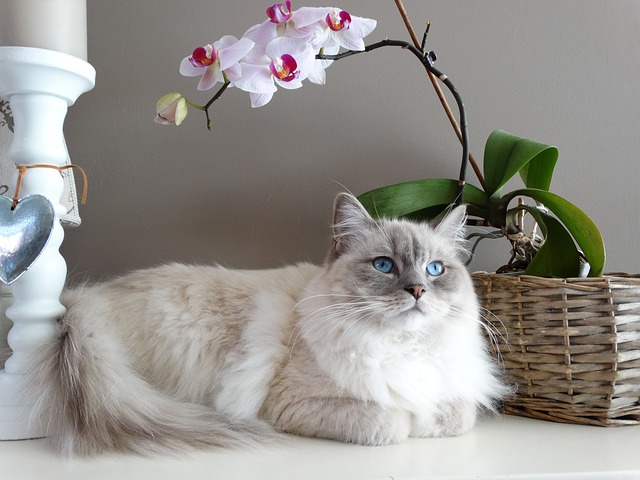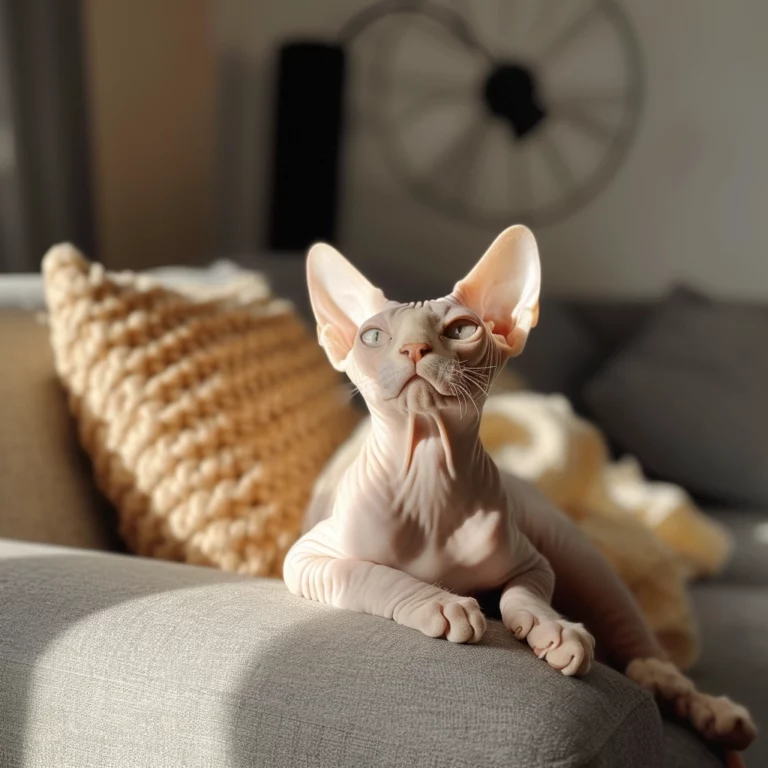Everything You Always Wanted To Know About Japanese Bobtail Cats
Did you know that the charming Japanese Bobtail has been a symbol of good fortune in Japan for over a millennium?
With their distinctive “rabbit-like” tails and sociable personalities, these cats are not just pets but a piece of living history.
Imagine owning a
In this guide, I’ll take you through the intriguing area of Japanese Bobtails, from their intriguing origins to their unique characteristics and health.
Whether you’re a seasoned
Overview of the Japanese Bobtail Breed
A Brief Introduction
Diving into the world of Japanese Bobtails, I’ve found that their history intertwines beautifully with their modern-day allure.
Originating in Japan over a millennium ago, these cats are not just ordinary pets; they’re living artifacts of cultural heritage and tradition.
Their introduction to Japan, likely through Asia’s trade routes, pegs them as more than mere animals; they’re symbols of prosperity and guardians of legacy.
One cannot help but be fascinated by how, in 1602, Japanese Bobtails were set free to protect silkworms, marking their esteemed place in society.
These cats’ trajectory, from being pivotal in ancient industries to their Western Hemisphere debut in 1968, outlines a rich, storied journey.
Unique Physical Characteristics
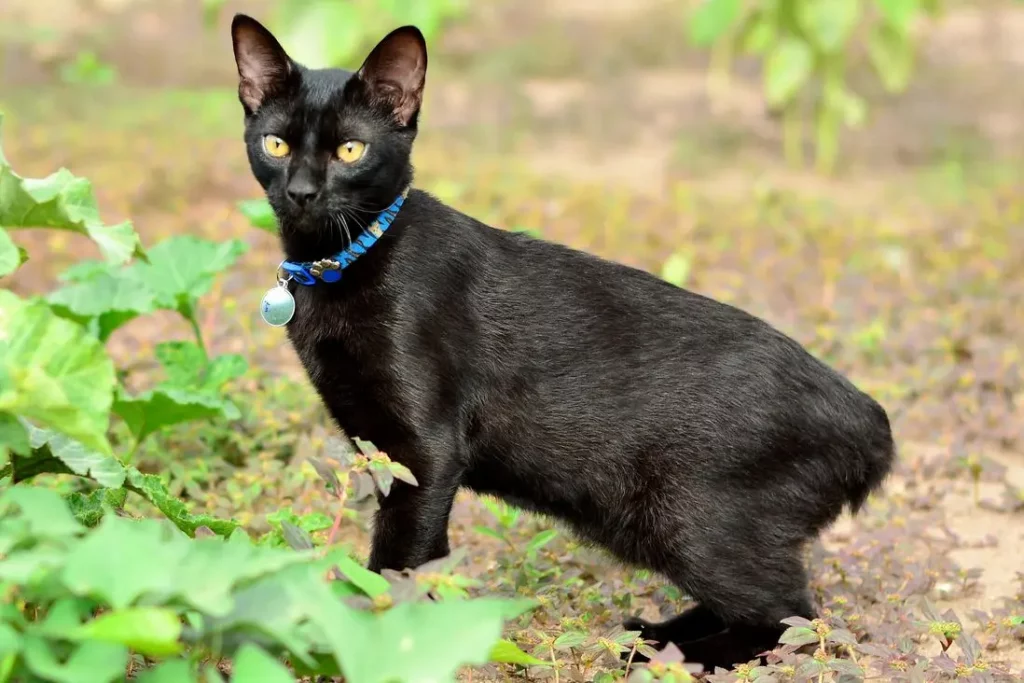
When it comes to distinguishing features, the Japanese Bobtail stands out in the feline world.
The breed’s iconic “rabbit-like” tail, each unique to its owner, ranging from rigid to flexible, forms the centerpiece of its charm.
Imagine a small pompom, an emblem of uniqueness in the
It’s this distinct tail that first captures the eye and intrigues
Size and weight wise, these cats are a testament to the saying “good things come in small packages.”
Weighing between 5 and 10 pounds, males typically on the larger end, they embody a perfect blend of agility and robustness.
Their coat also offers an array of choices—from short to long hair, and colors stretching across the spectrum, including captivating patterns like solid, bicolor, tricolor, and tabby.
What draws me particularly to them is the variety; you’ll find each
Eye color in Japanese Bobtails gives them an additional layer of mystique.
From piercing blue to warm gold and the intriguing odd-eyed, their gaze is as varied as their coats, adding depth to their already charismatic presence.
As I pour over these details, it becomes clear why the Japanese Bobtail is celebrated not just for its historical significance but also for its distinct aesthetics.
Their look isn’t just about beauty; it’s a nod to their rich ancestry and the diverse roles they’ve played throughout Japanese culture.
In adopting a Japanese Bobtail, you’re not just bringing home a pet; you’re adopting a piece of history, a companion with a legacy as intriguing as its appearance.
The History of Japanese Bobtail Cats
Origins and Evolution
Diving into the history of Japanese Bobtail cats, I find myself fascinated by their storied past.
These cats aren’t just animals; they’re living pieces of history, harking back to a time when they first set paw in Japan.
The consensus among historians and feline experts is that the Japanese Bobtail has graced Japan for over a millennium, a testament to its enduring presence in Japanese culture and society.
It’s believed that these cats arrived in Japan through trade routes connecting Japan with the broader Asian continent.
Specifically, they likely made their way from Southeast Asia and southern China, regions known for their rich biodiversity, including unique
Imagine these intrepid felines, journeying across seas and landscapes, eventually finding a new home in Japan where they would embed themselves into the fabric of Japanese life.
Besides, the Japanese Bobtail’s journey from a foreign import to a native icon is a fascinating evolution.
Initially, these cats served pragmatic roles, such as protecting silkworms by chasing away rodents in 1602, a critical period for Japan’s burgeoning silk trade.
Over time, their status evolved from working animals to cherished symbols of good luck and prosperity.
Cultural Significance
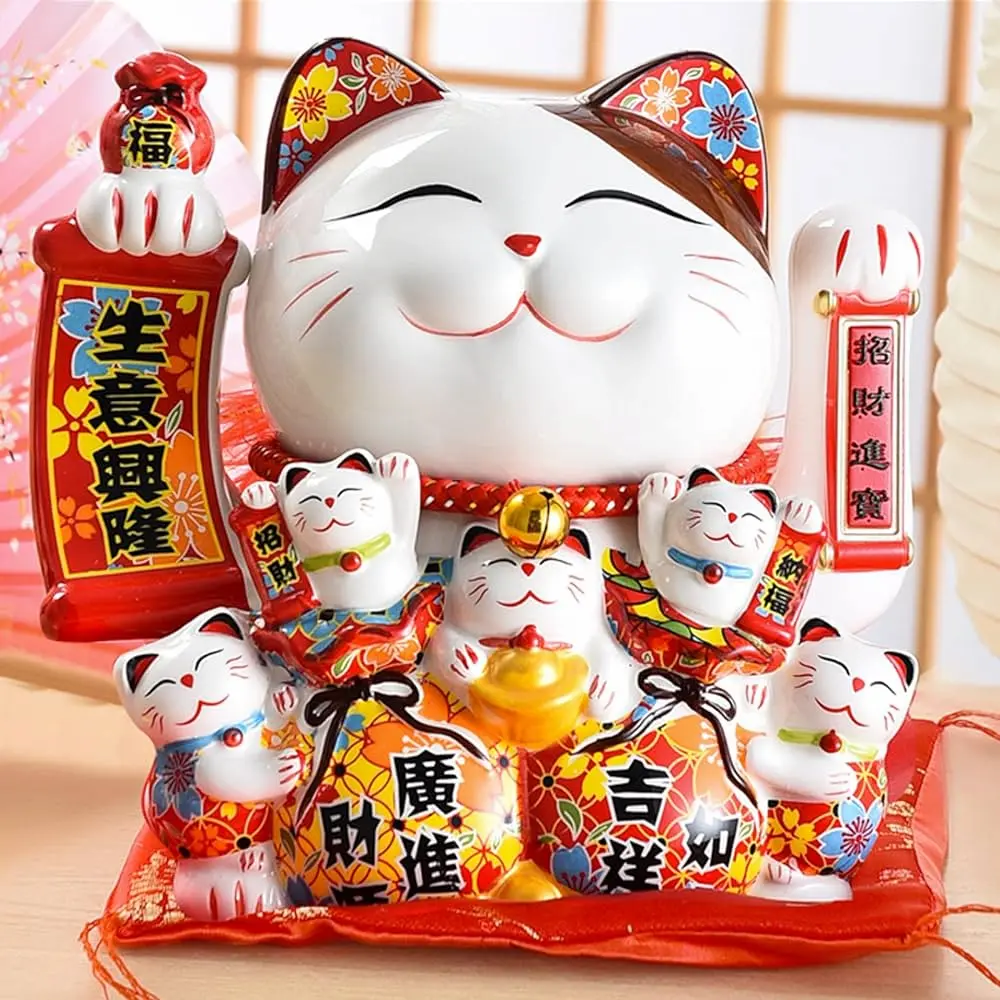
The cultural significance of Japanese Bobtail cats cannot be overstated.
For centuries, they have been more than just pets; they’ve been venerated as symbols of good fortune.
This reverence is perhaps best exemplified by the Maneki Neko, or the “Beckoning
With its raised paw, the Maneki Neko embodies the spirit of the Japanese Bobtail, inviting luck and prosperity.
This connection highlights the deep cultural ties the Japanese Bobtail has with luck and protection in Japanese folklore.
Fast forward to 1968, and we find the Japanese Bobtail making its debut in the Western Hemisphere.
This marked a significant moment, introducing the breed to a global audience and cementing its status as a beloved pet and a symbol of cultural heritage.
But, owning a Japanese Bobtail
Each
Hence, understanding the Japanese Bobtail’s origins and cultural significance illuminates not just the breed’s past but also its present and future.
These cats serve as a bridge between the ancient and the modern, reminding us of Japan’s rich cultural history and the enduring appeal of these charming felines.
As a lover of cats and culture, I’m drawn to the Japanese Bobtail’s story, a narrative interwoven with trade, tradition, and the enduring bond between humans and their feline friends.
Japanese Bobtail Temperament and Personality
Diving into the world of Japanese Bobtails, I’ve found their temperaments and personalities to be as distinctive and appealing as their unique physical traits.
These cats are far from just ornamental; they’re fascinating companions with a rich world of behaviors and compatibility features that make them exceptional family pets.
Let me guide you through their behavior traits and how well they mesh with families.
Behavior Traits
Japanese Bobtails are a symphony of delightful characteristics.
They’re known for their affectionate and friendly nature, making every interaction a joy.
Imagine a pet that greets you with playful nudges when you come home, or curls up beside you, always seeking to be part of your life.
That’s a Japanese Bobtail for you.
They’re not just social butterflies; they’re brilliant, too.
These cats are quick on the uptake, easily learning tricks like fetching – yes, much like a dog.
This intelligence also means they’re curious and love to explore their surroundings, so I recommend interactive toys to keep them engaged.
Their playfulness can’t be overstated.
Bobtails retain a kittenish energy well into adulthood.
Expect spirited play sessions that will entertain both you and your
Yet, they also have a serene side, showing a calmness that balances their lively moments.
Also, these cats have a special chirp-like meow, a charming vocalization that adds to their endearing personality.
They’re quite the conversationalists, often “talking” to their owners with a range of vocal sounds.
Compatibility with Families
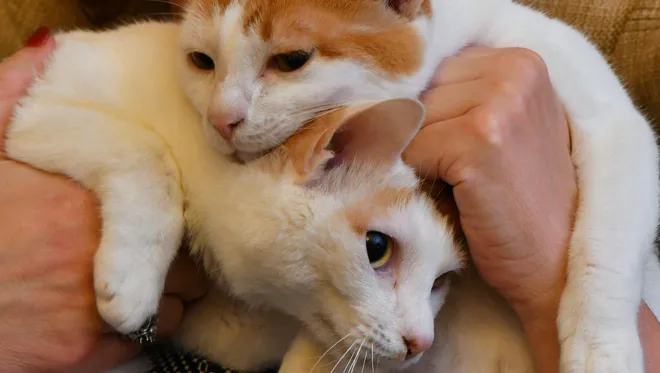
If you’re wondering how well Japanese Bobtails blend into family life, I’ve got good news.
They are exceptionally family-friendly.
Their sociable nature makes them great companions for children, always ready for playtime but gentle in their interactions.
For households with other pets, Bobtails make for harmonious companions.
Their agreeable and sociable demeanor ensures they get along with both cats and dogs, provided, of course, that their furry housemates are equally amiable.
Here’s a piece of practical advice for families considering a Japanese Bobtail: create an environment that caters to their playful and social nature.
Set up climbing trees, hideaways, and interactive toys to stimulate their curiosity and accommodate their active lifestyle.
Also, involve them in family activities.
These cats love to be at the center of attention and will thrive in an engaging and loving home environment.
Hence, the Japanese Bobtail’s ability to integrate into the dynamics of family life, complemented by their affectionate, playful, and intelligent personality, makes them an excellent choice for a wide array of households.
Their temperament is a testament to their long-standing appeal, from their historical significance in Japanese culture to modern homes worldwide.
Physical Attributes of Japanese Bobtails
Size and Body Structure
One of the first things you’ll notice about Japanese Bobtails is their size and structure.
They’re medium-sized cats, typically weighing between 5 and 10 pounds.
Males are usually on the larger end of the scale, while females tend to be lighter.
But, don’t let their modest size fool you; these cats have a muscular and athletic build that contributes to their agility and energy.
Their most defining physical feature, apart from the distinctive tail, is their body structure.
Japanese Bobtails possess a refined, elegant body that is well-muscled and balanced.
Their hind legs are notably longer than the front ones, which gives them a unique, powerful stance reminiscent of a rabbit.
This attribute not only adds to their charm but also their remarkable jumping ability.
Hence, it’s wise to provide climbing trees or shelves to satisfy their urge to leap and explore.
Coat Varieties and Colors
Diving deeper into their appearance, the coat of a Japanese Bobtail can tell you a lot about the breed’s diversity.
They come in both long and short hair varieties, catering to different preferences of
The coat itself is soft and silky, adding to their allure and tactile satisfaction when petting them.
When it comes to colors and patterns, Japanese Bobtails don’t disappoint.
They boast a wide array, including white, black, red, blue, cream, and various bi-colors and tri-colors, such as the esteemed calico or “mike” in Japanese.
Calico Bobtails, with their distinctive patches of black, red, and white, are often considered particularly lucky.
Besides, their eye color can vary widely too, with blue, gold, and odd-eyed (each eye a different color) being quite common.
For those of you considering adopting one, remember, the variety means there’s a Bobtail out there that can suit just about any preference.
Lifespan
For potential owners, it’s essential to understand the commitment involved, and lifespan is a significant part of that.
Japanese Bobtails are known for their longevity, often living up to 18 years with proper care.
Their robust health means you can enjoy many years with these delightful companions by your side.
Ensuring your Bobtail lives a long, happy life involves regular veterinary check-ups, a balanced diet, and plenty of exercises to keep those muscles toned and their mind active.
Don’t forget, their adventurous spirit means they’ll relish interactive playtime with you, making exercises a bonding experience.
Embracing a Japanese Bobtail into your home isn’t just about providing shelter; it’s about welcoming a bundle of joy that will fill your days with laughter, energy, and affection.
Understanding their physical attributes helps you better cater to their needs and ensures you both enjoy a fulfilling life together.
Grooming Requirements
Caring for a Japanese Bobtail, with its distinctive coat and unique tail, is a joyful task that requires attention but isn’t overwhelming.
Here’s how to ensure your furry friend stays well-groomed and healthy.
Shedding and Coat Care
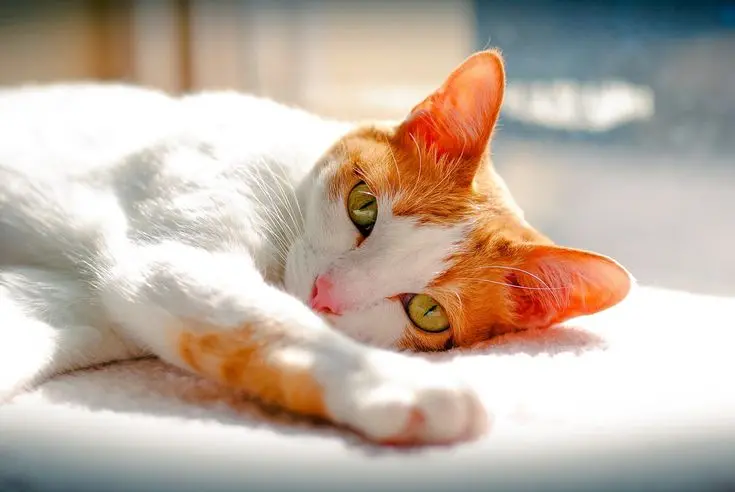
Japanese Bobtails display a range of coat types, from sleek shorthairs to the more voluptuous longhairs.
Their coat, regardless of length, is silky to the touch and lays flat against their body, making the grooming process relatively straightforward.
For shorthair varieties, I’ve found that a weekly brushing suffices to remove dead hair and distribute skin oils evenly along the coat, keeping it shiny and healthy.
A simple grooming glove or a soft bristle brush does the job perfectly, capturing loose fur and stimulating the skin.
Longhair Japanese Bobtails require a bit more effort.
I recommend brushing them two to three times a week to prevent tangles and mats, especially behind the ears and under the arms.
A wide-toothed comb or a slicker brush works wonders here, gliding through the fur without causing discomfort to your companion.
In both cases, shedding is modest, peaking during the change of seasons.
During these times, I step up the grooming routine slightly to keep on top of the loose fur.
Not only does this keep their coat in prime condition, but it also minimizes the amount of hair around your home.
Hygiene and Health Considerations
When it comes to hygiene, the Japanese Bobtail is relatively low-maintenance.
But, regular check-ups and cleanings should not be overlooked, as they play a crucial role in your
Starting with the basics, I always make sure to keep their ears clean and free from debris.
A soft, damp cloth around the outer ear area suffices, ensuring not to intrude into the canal.
This routine helps prevent infections, keeping those perky ears healthy.
Dental care is another crucial aspect.
I’ve incorporated a dental hygiene routine that includes brushing their teeth with
This practice helps ward off gum disease and keeps their breath fresh.
Contrary to some myths, Japanese Bobtails do not require frequent bathing, thanks to their coat’s minimal grease buildup.
An occasional bath with a gentle
Finally, maintaining claw health is key.
I provide plenty of cardboard scratchers to help them shed the outer layer of their claws and keep them at a safe length.
But, a monthly trim might still be necessary to prevent overgrowth and the issues that come with it.
Health and Wellness
Taking care of a Japanese Bobtail isn’t just about enjoying their playful antics or admiring their unique appearance; it’s also about ensuring they lead a healthy and happy life.
In my experience, understanding the potential health issues these cats might face and how to prevent them is crucial.
So, let’s jump into the health and wellness aspect of caring for your Japanese Bobtail, focusing first on common health issues and then on preventative care strategies.
Common Health Issues
Although Japanese Bobtails are generally a healthy and robust breed, with a potential lifespan of up to 18 years, they do face some health risks typical of most feline companions.
Hypertrophic cardiomyopathy (HCM) is one such issue.
It’s a heart condition that can affect these cats, leading to thickened heart walls.
Picture it like this: If the heart were an engine, HCM would be like running it on high all the time, eventually wearing it out faster.
Fleas and ticks are external foes that often go unnoticed at first.
But, they can cause a range of problems from minor irritation to serious diseases.
Imagine these pests as unwanted hitchhikers that aren’t just a nuisance but can actually endanger your
Heartworm disease is another concern, especially because there’s no effective treatment for it in cats.
It’s like an invisible threat that can suddenly turn into a grave problem if not prevented.
Finally, as these cats grow older, they might be susceptible to conditions like arthritis or dental disease.
It’s akin to how wear and tear affect us humans over the years; our feline friends aren’t immune to the consequences of aging.
Preventative Care Strategies
Preventing these health issues starts with regular veterinary visits.
Think of it as taking your car in for regular maintenance to keep it running smoothly.
Your vet can help monitor your
At least once a year is a good rule of thumb, but as they age, bi-annual visits might be better.
Flea, tick, and heartworm prevention are non-negotiables.
There are several products on the market, so it’s like picking the right brand of sunscreen; you need one that works best for your particular situation.
Your vet can recommend the most effective preventative measures considering your
Nutrition plays a huge role in preventing obesity and related health issues.
Feeding your Japanese Bobtail a balanced diet is like fueling up with premium gas; it keeps them running at their best.
Pay attention to their food intake and body weight, and adjust as necessary.
Keeping your
Engage them in play that mimics hunting behaviors — think toy mice or feather wands.
It’s not just fun; it’s like their version of going to the gym.
For dental health, brushing your
Diet and Nutrition
Feeding Guidelines for Optimal Health
Exploring the world of feline nutrition can feel like piloting a ship through stormy seas—challenging, but crucial for the journey’s success.
For Japanese Bobtails, their distinctiveness doesn’t end with their physical appearance; it seeps into their dietary needs as well.
Let’s chart a course for feeding these unique felines the right way.
I recommend starting with a high-quality diet that’s rich in animal proteins.
Why animal proteins, you ask?
Because cats are obligate carnivores.
They thrive on meat.
For a Japanese Bobtail, a diet featuring chicken, fish, or turkey provides the amino acids essential for heart health and vision.
Remember, the first ingredient listed on the
Portion control is your compass here.
Japanese Bobtails are energetic, but overfeeding can lead to obesity.
Typically, an adult Bobtail will do well on about 1/3 to 1/2 cup of dry food per day, split between two meals.
But, this can vary based on their age, size, activity level, and health.
When in doubt, consult with a vet.
They’re like the navigators for your pet’s health journey, offering tailored advice to keep your
Special Dietary Considerations
Just like us, Japanese Bobtails can have their dietary quirks and needs.
Some might have sensitivities to certain ingredients like grains or specific proteins.
In such cases, grain-free or limited-ingredient diets can be lifesavers, preventing itching, digestive upset, or other allergic reactions.
Their adventurous spirit means they’ll often explore with their mouths, leading to the occasional ingestion of things they shouldn’t.
This makes it imperative to keep their environment free from small, swallowable objects and toxic plants.
As much as we love to see their curiosity in action, we want to prevent any trips to the vet for the wrong reasons.
Aging Bobtails might need a shift in their diet to support joint health and maintain a healthy weight.
Senior cats typically require fewer calories but still need high-quality protein and added fiber.
Supplements like omega-3 fatty acids can also support joint health, keeping them spry and active.
Hydration is another key point.
Ensure they have constant access to fresh water, especially if your Bobtail favors dry food.
A
Finding a Japanese Bobtail
Adopting vs. Buying
When you’re ready to welcome a Japanese Bobtail into your home, you’re faced with two primary options: adopting or buying.
Both paths have their merits, and the right choice depends on your personal preferences and situation.
Adopting a Japanese Bobtail offers a heartwarming opportunity to provide a forever home to a
Rescues and shelters occasionally have purebreds or mixed breeds with Bobtail characteristics.
The advantage of adoption lies not only in the potential cost savings but also in the chance to make a significant difference in a
An adopted
But, finding a Japanese Bobtail through this route may require patience and persistence as they are a rare find in rescues.
Buying from a breeder, on the other hand, allows for more predictability about the
Breeders specializing in Japanese Bobtails can provide extensive information about the
This route is ideal for those seeking a kitten with specific traits or for show purposes.
The downside, of course, is the cost, which can be substantial, and the reality that unethical breeders exist.
What to Look for in a Breeder or Rescue
If you decide to buy a Japanese Bobtail from a breeder, I can’t stress enough the importance of finding a reputable one.
A good breeder is transparent about their breeding practices and open to answering any questions about the kittens’ upbringing, health, and ancestry.
They should provide a clean, nurturing environment that socializes the kittens properly.
Health guarantees and a willingness to take the
Visit the facility or home if possible, and observe how the breeder interacts with the cats.
Healthy, active, and well-socialized cats are good indicators of a caring and dedicated breeder.
Also, reputable breeders will be registered with
On the flip side, if adopting, look for a rescue organization with a thorough adoption process.
They should ask questions about your living situation,
This indicates they’re committed to finding the right match for each
A good rescue will also be transparent about the
Fun Facts and Trivia
Diving into the enchanting world of Japanese Bobtail cats, I’ve unearthed a trove of fascinating details that herald their enduring charm and mystique.
This breed’s quirky tail and lively disposition don’t just make them a pet owner’s delight but also a subject of captivating folklore and modern pop culture references.
So, let me walk you through some delightful tidbits that celebrate the unique legacy and modern-day allure of these cats.
In Folklore and Legend
Historically, Japanese Bobtails are steeped in rich cultural lore that spans over a millennium, making them more than just companions; they’re symbols of luck and prosperity.
One of the most iconic representations is the Maneki-Neko or the “beckoning
This figure of a
It’s commonly found in businesses and homes, where it’s thought to attract good fortune and wealth.
The origin of Maneki-Neko is as colorful as the breed itself, with several legends narrating its inception.
One such tale speaks of a struggling shop owner who took in a starving stray
This led to the rejuvenation of the owner’s fortunes, thereby cementing the
Besides, Japanese Bobtails were once considered protectors of ancient manuscripts.
Their prowess in pest control, primarily in silkworm barns, elevated their status from mere pets to invaluable workers, safeguarding the silkworm industry from mice and rats.
This functional aspect intertwined with their mystical appeal, portraying them as guardians of both physical and spiritual wealth.
Modern Pop Culture References
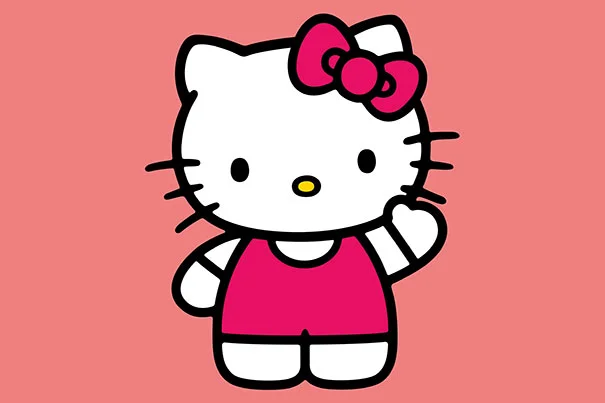
Fast forward to the present, and the Japanese Bobtail’s influence extends into the realms of anime, literature, and Internet fame.
Perhaps the most famous ambassador of the breed is Hello Kitty, a character whose bobtail-inspired simplicity has turned it into a global phenomenon.
Even though not having a visible tail, Hello Kitty encapsulates the charm and appeal of the breed, leading to its recognition and love worldwide.
In anime and manga, these cats are often depicted as wise, mystical beings with the ability to communicate with humans.
Their portrayal taps into the folklore that surrounds them, blending ancient beliefs with contemporary storytelling.
This seamless integration showcases the breed’s lasting impact on Japanese culture and its global reach.
For those intrigued by the Japanese Bobtail’s storied existence and present-day relevance, incorporating these elements into your life can be as simple as adopting Maneki-Neko statues for your home or diving into comics and shows that feature these charismatic felines.
They not only serve as a reminder of the breed’s fascinating journey through history but also add a touch of whimsy and luck to your daily life.
Frequently Asked Questions
How big do Japanese Bobtails get?
Adult Japanese Bobtails typically weigh between 6-10 pounds.
Due to their slender and muscular build, they appear larger than they actually are.
What are the common health issues in Japanese Bobtails?
The most noted health issues include hypertrophic cardiomyopathy and dental problems.
These issues underline the importance of regular veterinary check-ups and a maintained health care routine.
What diet is best for a Japanese Bobtail?
A high-quality diet rich in protein is best for Japanese Bobtails.
Portion control is vital to prevent obesity, and ensuring they have access to fresh water will keep them well-hydrated.
Should I adopt or buy a Japanese Bobtail?
The decision to adopt or buy a Japanese Bobtail depends on personal choice.
Adoption offers a home to a
Both options have their benefits.
How can I incorporate Japanese Bobtail lore into my life?
Incorporating elements like Maneki-Neko figures in your home can be a charming way to bring the good luck and whimsy associated with Japanese Bobtail lore into your daily life.
Educating others on their rich history and cultural significance can also be rewarding.
Conclusion
Adopting or buying a Japanese Bobtail
I’ve found that understanding their unique needs—from grooming and health care to diet and nutrition—is essential for their well-being.
Their fascinating background, coupled with their distinct personality and appearance, makes them a truly special companion.
Whether you’re drawn to them for their luck-bringing lore or their playful and affectionate nature, a Japanese Bobtail can add a touch of magic to your life.
Remember, caring for them is a rewarding experience that requires commitment and love.
Here’s to a life filled with the joy and luck these charming felines bring!
